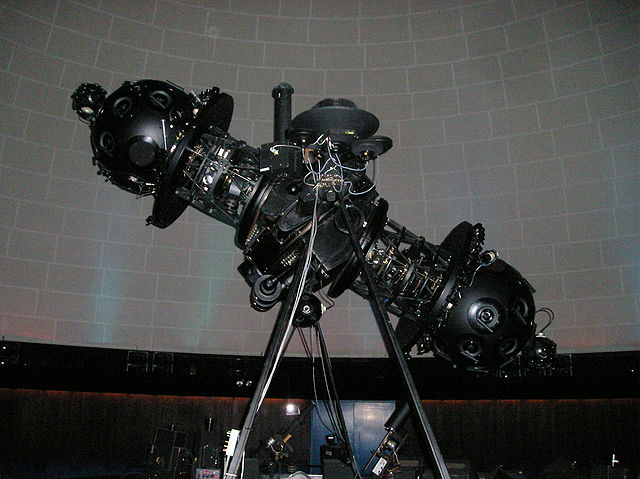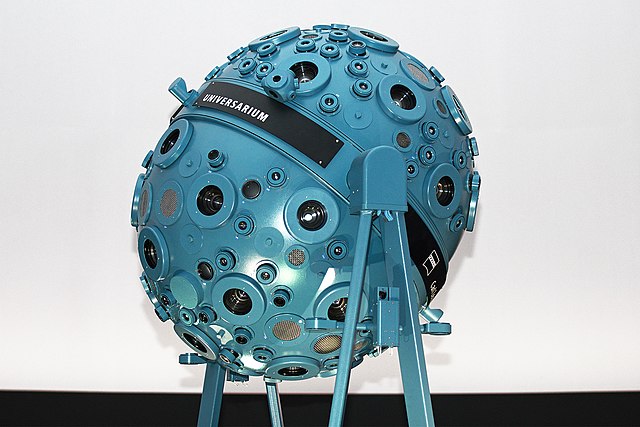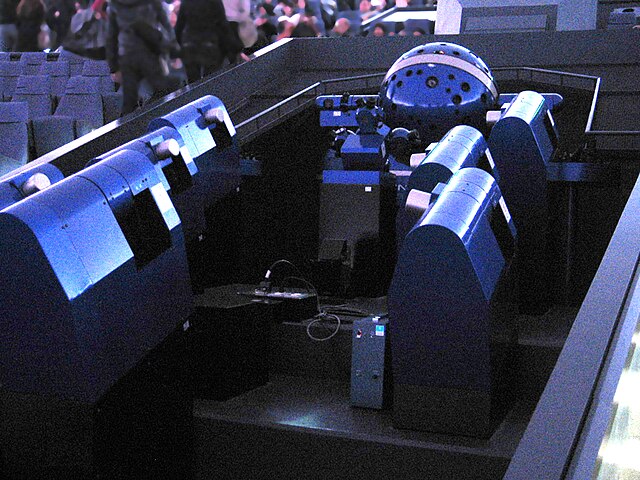A Zeiss projector is one of a line of planetarium projectors manufactured by the Carl Zeiss Company.
Main models include Copernican (1924), Model I (1925), Model II (1926), Model III (1957), Model IV (1957), Model V (1965), Model VI (1968), Spacemaster (1970), Cosmorana (1984), Skymaster ZKP2 (1977), and Skymaster ZKP3 (1993).
The Mark I projector installed in the Deutsches Museum in 1923 was the world's first planetarium projector.
The Mark III modified projector installed in the Planetario Humboldt 1950 in Caracas - Venezuela.It is the oldest in Latin America.
Marks II through VI utilized two small spheres of lenses separated along a central axis.
Beginning with Mark VII, Zeiss projectors adopted a new, egg-shaped design.
A planetarium projector, also known as a star projector, is a device used to project images of celestial objects onto the dome in a planetarium.
A Zeiss Universarium Mark IX starball projector
Zeiss-Jena Universal Projection Planetarium Type 23/6 1 - Constellation Figure Projector (North) 2 - Star Globe (North) 3 - Mechanical shutter of star field projector 4 - Milky Way projector (North) 5 - Planetary projectors (North) 6 - Lattice ring for Sun, Moon and Vertical circle projectors 7 - Horizon circle projector 8 - Planetary projectors (South) 9 - Star Globe (South) 10 - Compass point projector
A Konica Minolta Infinium projection system at the Osaka Science Museum, with a starball in the back and the auxiliary projectors for planets in the front. These projectors are complemented by a Virtualium II digital projection system.







